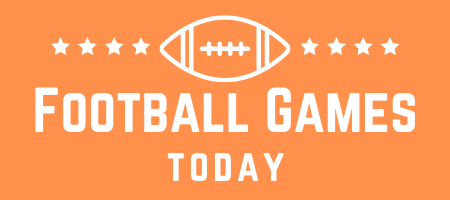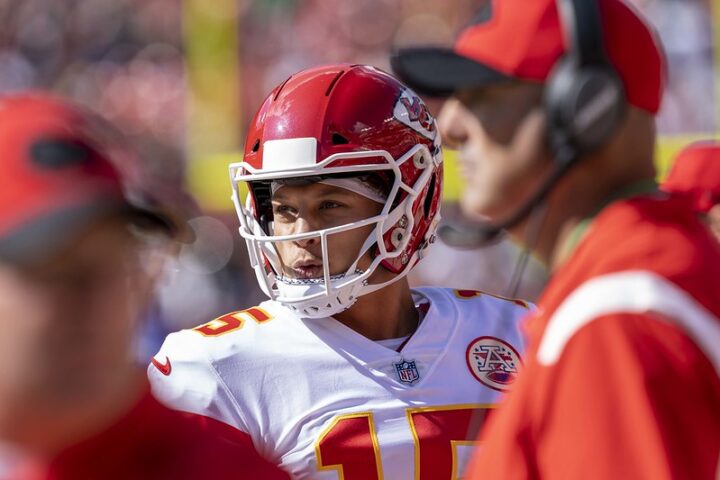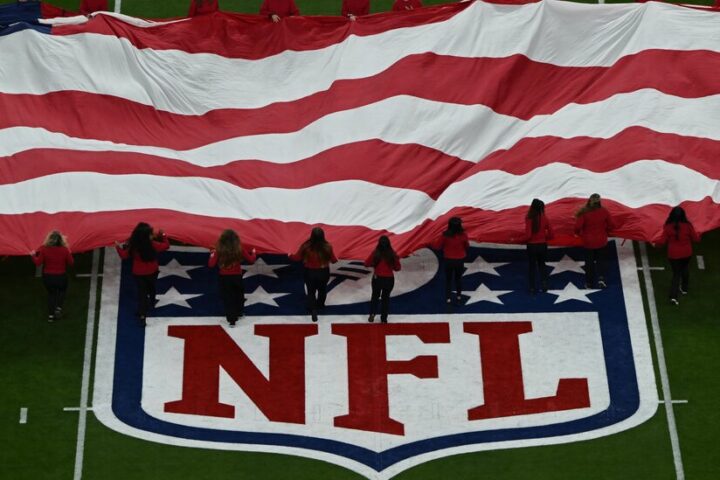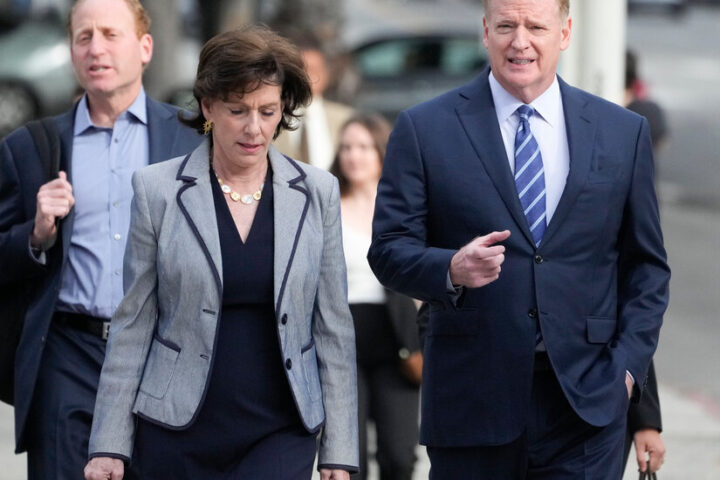The 2022 college football season is underway, with the staff at the East-West Shrine Bowl watching 2023 NFL Draft prospects very closely. After an action-packed Week 2 slate, we caught up with Director Eric Galko and Director of College Scouting Shane Coughlin to discuss the storylines and the scouting observations behind them.
Early-round QB talk dominates the Week 2 conversation
There was one matchup everyone circled in Week 2. Florida versus Kentucky. A ranked SEC battle pitting two early-round quarterbacks against one another in Will Levis and Anthony Richardson.
Both Levis and Richardson came into the season with similar buzz but vastly different backgrounds. Levis in 2021 might’ve borne some similarities to Richardson. He came into his 2021 campaign with just under 100 career attempts. But now, Levis is the incumbent starter with more experience under his belt. And Richardson is the young gun getting his feet wet.
Nevertheless, while the two quarterbacks are separated by a couple of years of age, their physical ability has them both in the first-round discussion. By extension, watchful eyes flocked to their clash last Saturday evening. And in a tight, tumultuous battle, Levis’ team came out on top, 26-16.
Neither QB was perfect — in fact, far from it. Both have things they need to work on in the coming weeks. But Levis’ performance did impress a notable spectator in Galko.
“That won’t be a game where you’ll look at it and say ‘remember that awesome throw from Levis in this place?’ Maybe he had one or two really impressive throws. But I think what we forget sometimes — especially in SEC play — is that getting a win matters at QB,” Galko explained.
“Not blowing a game. And I think the second half of Levis in that game, when he saw his defense controlling Richardson in ways I wasn’t expecting — as a QB, when you see your defense playing that well, a lot of guys with Levis’ talent will still be trying to make that big play. I give a lot of credit to Will and that offense for being more conservative, picking up first downs, and making big plays when they had to.”
Levis did have a long 55-yard touchdown midway through the second quarter — on which he displayed improved deep accuracy from a season ago. But for the most part, he played within the confines of Kentucky’s offense. Even with his long touchdown, Levis finished the game with 13 completions on 24 attempts, 202 yards, a score, and a pick. It’s an ordinary stat line, but the “W” at the end of it all does matter. Galko says that by managing the game, Levis played a hand in earning that.
“It’s easy sometimes, as a scout, to lose context of the score and the situation,” Galko went on. “If you’re Kentucky, it would’ve been weird to see Will throwing 50-yard bombs rolling out to his left side when they’re up by ten in a tight game on the road. I think Will showed in that game that, while game manager is a bad word, that’s exactly what he was in that game, and that’s impressive.
“Josh Allen at Wyoming struggled sometimes to be a game manager late in games. The fact that Will and that offense was very self-aware: ‘We just gotta win this game’. Getting a win, as much as wins don’t count as a QB stat — they do count when you’re on the road in the Swamp, and you get a chance to win against a Top 12 team. Levis had one bad throw in the second half, but a lot of good, safe throws, picking up first downs. NFL teams will see he’s not going to blow a game if they’re in position to win.”
Levis’ physical tools are alluring, and they’re what separates him from so many others as a potential NFL starter. But talented QBs also need to show they can also operate at a baseline level and keep the offense moving in structure. In the eyes of Galko, Levis showed that on Saturday.
Week 2 an important one for perspective building at QB
Last week, Galko talked about the importance of perspective building for the Shrine Bowl staff. Even though the staff only invites All-Star eligible prospects like Levis, it benefits them to have a hand on the national pulse for underclassmen like Richardson and Bryce Young, who will impact the overall draft board next April.
Halfway across the country in Austin, Texas, Young also found himself in a prove-it game like Levis. His Crimson Tide took on a Texas team that was hell-bent on getting a victory. And at times, it looked like the Longhorns would pull through. But every time he needed to make a play, Young did. Off-platform throws, out-of-structure improvisation, vision and manipulation — it was a complete game for Young, one where he single-handedly influenced a favorable outcome for his team.
Young’s performance was a big one for the exact kind of perspective building Galko calls for. And in Galko’s eyes, he’s definitively cemented himself as a top quarterback in the 2023 NFL Draft.
“Bryce has earned the reputation where, when I was watching the game, even when Texas was driving, I’m like ‘If they leave Bryce Young 45 seconds, I’d still bet on Bryce.’ He’s earned that. It’s a trait that’s hard to put into a report, but I think Bryce proved that. He’s proved enough in his college career. He’s shown that he has the wherewithal and the intuition of when to throw and when to run. He knows when to take chances and when not to, especially in close games. Bryce further showed that he’s one of the top three or four quarterbacks drafted, if not No. 1.”
It’s something that has garnered universal appreciation in Young’s game — the “it” factor. And at this point, it’s an expectation week in and week out. Young has a season under his belt and was the 2021 Heisman winner. Even as an underclassman, he is that guy.
That’s something that should translate to the NFL level, even with the lingering size concerns: Being able to convert in high-pressure situations. Shrine Bowl Director of College Scouting Shane Coughlin is in sync with Galko when saying that, while consistency matters just as much, high-pressure reps do carry great credence in the evaluation.
“It’s hard not to factor in situational football. Is this guy the same player in the first quarter that he is in second overtime? Is this the same stamina running back after 30 carries? Is this the same decision-making QB when his first read’s not open? Is this the same in the second quarter and at the even of the fourth quarter? It’s hard not to say that kind of stuff weighs a lot differently.”
Anthony Richardson still working to get to Young’s level
While Young dazzled in a high-pressure setting, not all underclassmen are created equal. Young and C.J. Stroud, at this point, have locked in early first-round consideration. With his tools, Richardson undoubtedly has the potential to reach that point. But his performance against Levis and the Kentucky Wildcats felt like a week of stagnation.
After leading his Gators to a victory over the top-ten ranked Utah Utes a week prior, Richardson put together an erratic showing in Gainesville. He completed just 14 of 35 passes for 143 yards and also tossed two interceptions — one of which was a pick-six. The Kentucky defense also managed to bottle up Richardson on the ground — perhaps a byproduct of taking an early lead and maintaining it.
The circumstances got the better of Richardson on Saturday. After showing glimpses of growth with his placement and pocket presence against Utah, he was more volatile against Kentucky. Despite Richardson’s off week, however, Galko isn’t changing his perspective on the Florida passer. He warns about overreacting to one game, especially for a QB who has so little experience to this point.
“I think Richardson struggled, but — not to make an excuse — we kind of expected some early-season struggles,” Galko said. “He didn’t play a whole lot of snaps last year. I still have a good feeling that, by November, Richardson being one of the top three or four quarterbacks will be commonplace.
“Right now, in a big game, he did not play well. Two picks, with a pick-six. They were bad throws. That’s going to come with not having enough reps. He’s going to be raw, but I think by November, it wouldn’t be crazy to say he’ll be one of the top picks in this draft.”
There’s still an abundance of possibilities with Richardson. There are positive and negative potential outcomes. Maybe he does become the first overall pick. Maybe he doesn’t quite take the leap he needs to this year and returns to school. But for Galko, the bottom line is this: It’s early, and growth is measured over time.
“It’s important to keep that context, because you don’t change grades after one week, or even three weeks, especially for top quarterbacks,” Galko elaborated. “If it was the other way around, and Young had thrown two interceptions against Kentucky and they lost, and Richardson had made a last-second comeback against Texas, I think we’d be shocked and it would be notable for both sides. But both those outcomes were not totally unexpected.”
Other prospects who impressed the Shrine Bowl staff in Week 3
It’s easy to get tunnel vision when high-profile prospects like Young, Levis, and Richardson have high-stakes games in the early weeks. But it’s the Shrine Bowl’s job to leave no stone unturned. And when asking about prospects who impressed over the past week, it’s clear that they don’t.
The first name that comes to mind for Galko is Missouri offensive tackle Javon Foster, who had to go up against Kansas State EDGE Felix Anudike-Uzomah in Week 3. Anudike-Uzomah won a few reps, but Foster did manage to hold him to half a sack, something that should be considered a win against a potential first-round talent. For Galko, the traits stand out with Foster. He has the tools to consistently put up a fight.
“I thought Foster played well,” Galko said of the Tigers blocker. “He’s a good athlete, and he played well laterally. I thought he was mostly consistent all game long. As an offensive tackle, it doesn’t always look pretty — I call it the David Bakhtiari effect. When he was at Colorado, it didn’t always look pretty, but the dude won a lot of reps.”
Galko also brought up the explosive QB-WR connection of Hendon Hooker and Cedric Tillman in Tennessee — the efforts of whom proved instrumental in securing a 34-27 overtime win against Pittsburgh. Hooker completed 27 of 42 attempts for 325 yards and two touchdowns, while Tillman accounted for nine catches, 162 yards, and one of those scores.
“Cedric Tillman and Hendon Hooker had a good connection,” Galko exclaimed. “I talked to a scout just yesterday about Hooker. It’s a bit hard to fully evaluate him in that offense, but I think when you continue to play well, and your deep ball is still on track… I think it’s the same for Hendon, where ‘game manager’ is a good phrase, not a bad phrase. Last year, he was just so efficient, with so few mistakes. I like the fact that he got his butt kicked early by that Pitt defensive line, and still had no turnovers, no fumbles, no bad sacks. He adjusted later in the game, he still made deep throws. And obviously, Tillman is his guy.”
Tillman is the alpha, but Galko also made mention of Bru McCoy — the heavily-traveled former five-star recruit who seemed to enjoy a mini-breakout against Pitt, logging four catches for 58 yards and a touchdown of his own. Tennessee has a lot of size and talent with its offensive cast. That’s something Galko is keeping a close eye on, especially with clashes against Florida and Alabama in the near future.
Shrine Bowl’s Shane Coughlin has his eyes on the FCS
When your mode of operation is to leave no stone unturned, you can’t just say it. You have to live it, and you have to embody it. Talking to the Shrine Bowl staff, there’s no selling going on. There is only information, and that information tells you all you need to know about their process and how sound it is.
It also helps that they just love what they do. The first thing Coughlin said when he was given the floor to talk about a high-octane Week 2 schedule: “College football’s the best.”
It’s hard to argue with Coughlin after last week. Six overtime games in the FBS slate. Two massive upsets with Marshall beating Notre Dame and Appalachian State beating Texas A&M. But even with all the intrigue and all the drama on the national stage, Coughlin’s attention quickly goes to the FCS. That’s what he really wants to talk about.
First up is Holy Cross, a team that came out on top of FBS opponent Buffalo in Week 2. As Galko said a couple of weeks ago, the Shrine Bowl staff takes notice when FCS prospects perform well in those big-ticket games in the early weeks. Coughlin makes a note of two players on defense: Linebackers Jacob Dobbs and Liam Anderson. Dobbs led his team in total tackles against Buffalo, while Anderson had six tackles and half a sack.
“To me, they’ve got two four-down NFL-caliber linebackers at FCS Holy Cross,” Coughlin said of Dobbs and Anderson. “Dobbs has a lot of the shine. FCS All-American. Anderson has a little bit more size. I think pound-for-pound, Anderson’s a better athlete. But both of these guys are so productive, and it’s no surprise that, in an FCS upset, they’re both at the top of the defensive stat sheet. I’m really big on those two guys, especially considering that they played very well, and they have NFL value on every down.”
Next is Missouri State running back Jacardia Wright — a former Kansas State ball carrier who rumbled to 120 yards on 23 carries against UT Martin, while also tacking on three catches for 42 yards and a score. Wright earned a spot on our Week 2 2023 NFL Draft sleepers list for his performance. And Coughlin says he’s earned an extended look from the Shrine staff as well.
“Any kind of categorizable list like the Shrine 1000, in my opinion, is a celebration of college football,” Coughlin went on. “The conversation is, ‘Now can we put that guy in the Shrine 1000? Did he deserve it? Does he deserve it now?’ Certainly on tape, [Wright] jumps out. A performance like that in — I wouldn’t call it primetime, but in an isolated spot where there isn’t a lot of other action going on. He definitely pops out. After that, you want to keep tabs on them. What’s his schedule like? Who do we have in the area to possibly go see him in person?”
The Shrine Bowl’s staff, and by extension, its reach, is expansive. And when a prospect pops as Wright did in Week 2, the focus shifts to getting a closer understanding of a player. As Galko explained after Week 1, going in-person to a game can help accomplish that.
Analyzing FCS-to-FBS transitions in scouting
Every cycle, we see movement between the different tiers of the college football world. Wright went from the FBS level to the FCS, transferring from Kansas State to Missouri State. But just as often, we see talented FCS prospects take the leap to the FBS for what many view as trial runs for anticipated NFL ascensions.
Talking with Coughlin, it’s important to have an understanding of a prospect’s traits as they make that kind of jump up. But it’s also just as important to stay tuned in to the contextual factors around them, as those factors may ultimately have an impact on their performance and thus how they’re perceived.
“To me, my gut instinct is traits,” Coughlin says about productive FCS prospects ascending to the FBS. “And the less concrete answer is, what is actually happening on the field? Is there a situation that he was manipulating at his other school? Is there a move that worked, and now it’s not translating?”
Some very productive FCS players go on to be just as productive in the bowl subdivision. But an equally large amount fizzle out. For Coughlin, when prospects don’t translate as expected, it becomes a two-pronged exercise: Key in on the traits, and explore the situation to see if something is holding them back.
“My things are: Traits, identifying how he was winning, identifying if he’s using the same play style, and then what’s changing around him,” Coughlin explained further. “Does he have a better or worse offensive line? Does his scheme match his play style? What is actually happening on the field? What’s limiting him, or what was working that’s no longer working?
“I think the sliding scale changes based on traits. If you’re talking about someone who’s a prototype body with prototype speed, who checks the height/weight/speed boxes, I think I’m a little bit more lenient on some growing pains.”
Asking questions to reach a concrete truth
As you might pick up when listening to Galko and Coughlin talk, asking questions is perhaps the biggest part of their job. It’s not too dissimilar from the scientific process. Ask a question, explore, and come to a conclusion. Talking to Coughlin in a Week 2 checkpoint update, he makes clear that the Shrine Bowl staff is still very much in the “asking questions” phase. But each question answered brings them just a bit closer to where they want to be.
For the Shrine Bowl staff, which has to decide on prospects and send invites within a couple of months, it can be difficult to find a balance between asking questions and needing answers. Coughlin’s best remedy for this, in his words, is to always be dynamic in one’s evaluation.
“We’re still in the part of the season where the guys that are green will remain green, and the guys that are not will remain there. The biggest thing is not overreacting, but also treating performances and new information like a living, breathing report,” Coughlin expanded. “It’s a snowball effect in the sense of, the more times you jot down a new trait or a new observation, we’re getting closer to the truth.
“You have scouting opinions — it’s hard to compartmentalize draft stock — but there is a truth to putting an adjective on a trait.”
As for what those concrete adjectives are, the Shrine Bowl staff isn’t quite there yet, to have a succinct conclusion on each player. But that just comes with the territory this time of year. It’s important to say “yes” on prospects, but it’s also important to make sure every “yes” is a complete, thorough decision and not a rushed conclusion.
“I think two weeks is still in the range of ‘he’s playing well, he had a good game, had a good matchup’, and not definitively ‘this is who he is, and this is what we can expect moving forward,’” Coughlin said. “That’s my balance. I like to treat it as dynamic. There’s always going to be something new every week.”
But this conversation unearths an important question. What is the point that you have a definite “yes” on a prospect? How do you know when you do or don’t have enough? How do you know when you’re ready to send an invite? Especially for the Shrine Bowl staff, for whom time is an incredibly valuable resource, this is a pressing issue.
Much like Galko a couple of weeks prior, Coughlin emphasizes that being prepared helps you work faster and more efficiently when you need to.
“There are so many variables that you can’t control,” Coughlin explained. “To me, the most conviction and confidence you can have with an evaluation all comes down to preparedness. If there’s one snap that shows me something I don’t know, then we’re not ready for an invite process.
“Through the summer and the first two weeks of the season, we’re trying to say ‘yes’ and answer as many questions as we can, so when it comes down to that final yes or no, we’ve answered every question. Every trait, every piece of character, every bit of intrigue is explored, and like I said, that only comes from preparedness. That’s how I view the invite process.”
And what about prospects who take longer to get off the ground? What about prospects who still haven’t shown who and what they are several more weeks in when the Shrine Bowl needs to make a decision?
Invoking a constant synergy with Galko and the Shrine Bowl process, Coughlin calls back to the raw vs. underdeveloped conversation from earlier in the season. For prospects that still bring questions when the invite process arrives, that’s the deciding factor in whether they earn consideration.
“I think you really need to be binary in underdeveloped vs. raw, and then the sliding scale adjusts from there,” Coughlin emphasized. “Has he only been playing football since his junior year, or is he an eight-year starter who’s taken a COVID year and two medical redshirts? I might be more inclined to say he’s not able to fix that if he’s the latter type of player.
“I also like to get in the mind of a coach, go back to the traits, and say ‘Is this something I’m willing to invest a pick, or invest my time into fixing this? Is it something that’s identifiable to the point where, it can be corrected with a few focused practices? Or is it a learned behavior?’ I think most things can be outworked. If you’re a good player, or you have good traits, or you’re effective despite some mistakes, that’s a kid that I take a chance on, and I don’t draw anything away from him.”
Coughlin further emphasizes that, as a Shrine Bowl scout, you’re assisting the NFL. You’re identifying prospects who can help NFL teams succeed. And within that framework, it benefits the scout to put themselves in the shoes of a coach. Because while a scout may view a prospect as a tangible, static entity, a coach may view him as a ball of clay to work with and utilize in different ways. There’s a possibility that comes from the coaching lens, and Coughlin tries to incorporate that.
“As a scout, I’m saying what’s happening on the field is not good. But as a coach, I’m saying that, with two or three concentrated sessions with that kid, we might have a good football player.”



